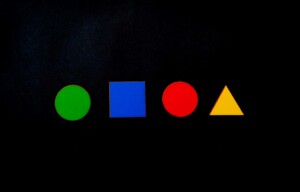
In Five-Element Theory, shapes can represent elements. For example:
METAL is defined as round or curved shapes
WOOD is represented by tall, thin, column-like shapes
FIRE is represented by pointy, pyramid-like shapes
EARTH is defined by square or rectangular shapes
WATER is wavy and almost shapeless in the way that water takes on the shape of whatever space it contains.
In the practical application of elements to rooms, some feng shui consultants recommend that the element used also adhere to its related shape. There have been heated debates on internet feng shui discussion forums about the necessity of using 5-Element Theory to this degree of precision. Is it necessary? Based on my personal and professional experience, I would say that it is really not vital to have your element match its related shape.
For example: When I suggest that a client use the METAL element in a room, I first look to see if they can accomplish this with functional items or useful décor pieces. It could be a metal lamp, a wrought iron bed frame, a bronze statue, or a bundle of copper pipes hidden under a bed or couch. Does the METAL item need to be round? My experience is that it does not have to be round to work. The sheer weight of the metal is much more important.
With the FIRE element, depending on what room needs fire, I once again look for a way that the remedy could be added to look natural. Whether it is a burgundy bed spread, or maroon drapes, or a magenta area rug—they all work as the fire cure. I have even had clients take a blank canvas (square shape/technically the earth element) and paint it bright red. Guess what? It works. In other words, the canvas does not have to be triangular in shape nor does any red item have to resemble a flickering flame in its shape.
When a client is designing a pool, do I recommend they use a natural looking curvy shape over a long rectangle? Sure I do. But does it make a huge difference? Not in my experience. A pool is thousands of gallons of water and the shape of the pool is NOT going to change that fact.
When someone needs the WOOD element as a remedy, a live plant is best. But a whole room that is painted green can also vibrate the WOOD element. So, what “shape” is the color green? The answer is none. But it still works.
The honest truth is that when some feng shui teachers run out of things to teach, they might create more classes by focusing on these smaller details and making a bigger deal out of them than is necessary. Then, inexperienced students get the impression that these details are critical. Not only is this rigidity unnecessary, but it is this same rigidity which has alienated the design and architecture community from being more receptive to working with feng shui consultants.
Five Element Theory absolutely works, but too often people take it to extremes or to levels which will virtually have no impact on a client’s well-being. When I first started studying feng shui, I read a book by an interior designer-turned feng shui consultant that devoted a chapter to categorizing stripes and wall paper patterns into which elements they represent. No kidding! It is this kind of obsession with minutiae that can make new feng shui practitioners insecure and unimaginative in recommending appropriate remedies.
Shapes and forms do matter, but on a small scale, they do not compete with the energy of an actual element. On a large scale, the shape of buildings, the length of roads and the shape of surrounding natural features can in fact matter.
Author: Kartar Diamond
Company: Feng Shui Solutions ®
From the Feng Shui Theory Blog Series

